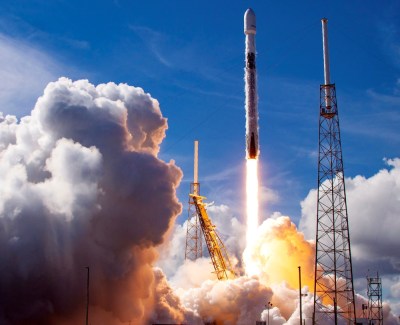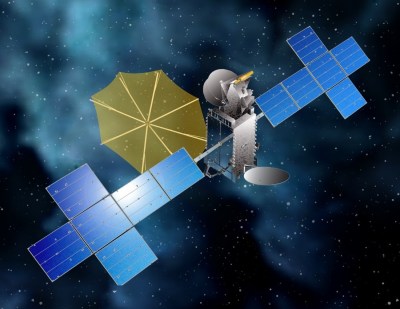Sirius XM Satellite Failure a Reminder that Space is Risky (And That Satellite Insurance is a Thing)
It’s easy to imagine that once a spacecraft leaves Earth’s atmosphere and is in a stable orbit, the most dangerous phase of the mission is over. After all, that’s when we collectively close the live stream and turn our attentions back to terrestrial matters. Once the fire and fury of the launch is over with, all the excitement is done. From that point on, it’s just years of silently sailing through the vacuum of space. What’s the worst that could happen?
 Unfortunately, satellite radio provider Sirius XM just received a harsh reminder that there’s still plenty that can go wrong after you’ve slipped Earth’s surly bonds. Despite a flawless launch in early December 2020 on a SpaceX Falcon 9 and a reportedly uneventful trip to its designated position in geostationary orbit approximately 35,786 km (22,236 mi) above the planet, their brand new SXM-7 broadcasting satellite appears to be in serious trouble.
Unfortunately, satellite radio provider Sirius XM just received a harsh reminder that there’s still plenty that can go wrong after you’ve slipped Earth’s surly bonds. Despite a flawless launch in early December 2020 on a SpaceX Falcon 9 and a reportedly uneventful trip to its designated position in geostationary orbit approximately 35,786 km (22,236 mi) above the planet, their brand new SXM-7 broadcasting satellite appears to be in serious trouble.
Maxar Technologies, prime contractor for the SXM-7, says they’re currently trying to determine what’s gone wrong with the 7,000 kilogram satellite. In a statement, the Colorado-based aerospace company claimed they were focused on “safely completing the commissioning of the satellite and optimizing its performance.” But the language used by Sirius XM in their January 27th filing with the U.S. Securities and Exchange Commission was notably more pessimistic. No mention is made of bringing SXM-7 online, and instead, the company makes it clear that their existing fleet of satellites will be able to maintain service to their customers until a replacement can be launched.
So what happened, and more importantly, is there any hope for SXM-7? Neither company has released any concrete details, and given the amount of money on the line, there’s a good chance the public won’t get the full story for some time. But we can theorize a bit based on what we do know, and make some predictions about where things go from here.
The Story so Far
We know the launch went off without a hitch. For one thing, Sirius XM has made it clear they aren’t implicating SpaceX in the failure. But moreover, as is customary for the commercial launch provider, the entire mission was live streamed. Had there been some kind of issue during fairing or payload separation that could have physically damaged SXM-7, the whole world would have seen it.

We also know that SXM-7 was functioning normally after it separated with the Falcon 9’s upper stage. The booster put the satellite into a geostationary transfer orbit, but it was the spacecraft’s own onboard propulsion systems that were responsible for carrying it the rest of the way. Had the satellite failed completely, or was otherwise unresponsive to ground controllers, it would never have arrived at its intended orbit.
What about the spacecraft itself? As the name implies, SXM-7 is the seventh satellite of its type, all of which have been based on some permutation of Maxar’s modular SSL-1300 bus. This is an extremely popular platform, and since its introduction in the late 1980s, has been the basis of nearly 150 current or planned communication and weather satellites. Of these, only a handful have experienced major system failures. In short, this is a mature and well-understood spacecraft. A systemic problem, while not impossible, seems unlikely.
Dead on Arrival
Shortly after liftoff, Sirius XM put out a press release announcing SXM-7 was safely in orbit and operating normally. It then started on the two week journey to geostationary orbit, and as recently as January 14th, a post on Maxar’s blog said the spacecraft was working perfectly and would soon be entering service. But it never happened.

At this point, we can’t say for sure why SXM-7 failed so late in the game. But if ground controllers had control of the spacecraft and were able to maneuver it into orbit, it stands to reason that the fault has something to do with its ability to be used commercially.
Some have theorized that the satellite’s large unfurlable reflector, critical to its ability to deliver streaming audio to the tiny antennas used by consumer XM radio receivers, has failed to open. Or potentially the issue is in one of the satellite’s powerful radios; either SXM-7 is unable to receive the uplinked audio broadcast from Sirius XM, or it can’t transmit it back down to Earth.
On January 27th a company spokesperson made it clear that despite the failure, Sirius XM still has control over the satellite and can maneuver it. This is actually a very important detail. For one thing, it confirms this wasn’t a total failure and that the spacecraft is still intact. But it also means the satellite will be able to move itself into a “graveyard orbit” if it can’t be brought online. With only a limited number of geosynchronous orbits available, non-functional satellites must be removed in a timely manner. While the ability to reposition dead communications satellites by a recovery vehicle has recently been demonstrated, it’s an expensive and complex operation that should be avoided if at all possible.
A Covered Loss
While the failure of SXM-7 is surely a great disappointment to Sirius XM, the company’s pragmatic approach to operating their satellite fleet should keep it from becoming anything more than a temporary setback. Their primary XM-3 and XM-4 satellites are still in good health, and an orbital backup is ready to take over should the need arise. Another satellite, SXM-8, is also due to join the fleet later this year. But beyond these practical considerations, the company was also careful to protect themselves financially.
In the SEC filing, Sirius XM revealed they purchased a $225 million insurance policy for SXM-7 that covered not only the launch, but the first year of commercial operation. While for many missions it would be enough to get reimbursed for a vehicle that’s destroyed during liftoff, this case is a perfect example of why extending that coverage into the spacecraft’s operational lifetime can be important when the long-term success of a commercial venture is potentially on the line.
But while that potential insurance payout might be good news for Sirius XM stockholders in the short term, it will ultimately add to an industry-wide problem that’s been building for years. With a relatively limited pool of policyholders from which premiums can be collected, insuring spacecraft is an unusually risky proposition. For example, the $410+ million payout that resulted from the loss of a United Arab Emirates military satellite in July 2019 cancelled out the year’s premiums for the entire industry.
Traditionally this hasn’t been much of a concern, but as launches become cheaper and more frequent, the likelihood that insurers will get hit with a claim increases. Logically this should lead to rising premiums, but since spacecraft insurance isn’t compulsory, insurers could price themselves right out the market if they aren’t careful. It will be interesting to see if an influx of new customers can balance out the equation in the coming decades, or if the concept of space insurance in its current form ends up being little more than an interesting historical footnote from the fledgling days of space commerce.
Post a Comment